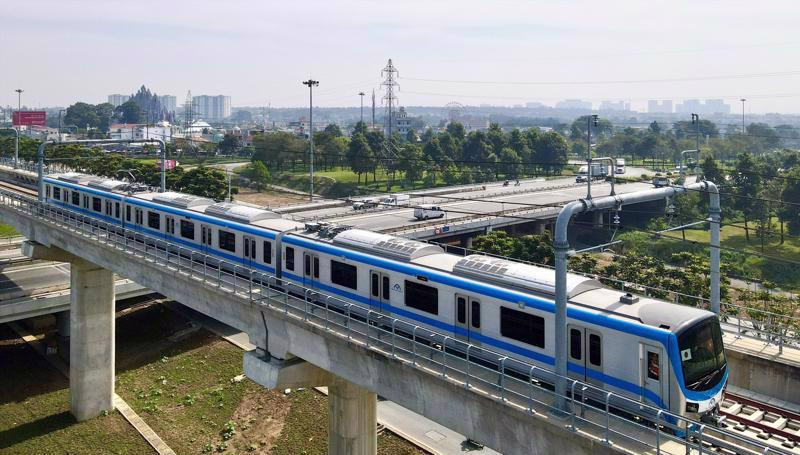
Under the government’s plan, the North-South High-speed Railway projects would kick off in 2027, when Vietnam’s GDP is expected to reach $564 billion, so there will be sufficient resources for project development.
Authorized by the Prime Minister, Minister of Transport Nguyen Van Thang has signed the government’s statement about the North-South High-speed Railway development submitted to the National Assembly.
The railway would start in Hanoi (Ngoc Hoi Station) and finish in HCM City (Thu Thiem Station). With the total length of 1,541 kilometers, 23 passenger terminals and five cargo terminals, the railway would go through 20 cities/provinces.
The idea of developing the North-South Railway was agreed to by the 13th Party Central Committee, Politburo and the government.
Twenty cities or provinces have been chosen for the high-speed railway to go through, made on the principle of "being as straight as possible".
The government has proposed public investment using the state budget. It is estimated that the total investment capital of the project is VND1,713,548 billion ($67.34 billion) and the time needed to recover capital 33.61 years.
According to Hoang Van Cuong, a member of the National Assembly’s Finance Committee, this is the largest project and it needs special mechanisms to be sure that it can be done on schedule with Vietnam mastering the technology and creating a driving force for socio-economic development.
Cuong said there must be a reasonable mechanism to gather the huge capital. A capital shortage must not occur during the implementation period.
He said that it is necessary to mobilize the intelligence and financial resources of large domestic corporations. The principle is that Vietnam will be self-sufficient in the process of building, operating, maintaining and repairing railways.
The government’s report showed that transport demand is increasingly high, the national economy had value of $430 billion in 2023 and the public debt is low, at 37 percent of GDP. By the time the project kicks off, GDP would reach $564 billion.
350 kilometers, for passengers only?
In just 10 years, Vietnam expects to have the fastest high-speed railway in the world. China and Indonesia are running 350 kilometers per hour railways, while Japan, France and South Korea have 320 kilometers per hour railways. However, the speed for the North-South Railway remains an issue of debate.
A solution is operating the railway under a mixed model with speed varying in shorter sections of the North-South Railway. It would be used for both passenger and cargo transport. On the same route, there would be different sections running at diferent speeds, suitable to demand.
If this solution is chosen, this means the maximum speed of 350 kilometers per hour won’t be applied to all railway sections. But this would bring large economic benefits if cargo transport on the distance of 100-400 kilometers is allowed.
The 200-250 kilometers per hour speed on short distances, such as Hanoi-Vinh and HCM City – Phan Thiet won’t considerably reduce the time needed to carry passengers. This would synchronize the cargo transport system with other railways which are being planned, such as Lao Cai – Hanoi – Hai Phong; HCM City – Can Tho; and the inter-regional railways being built by Laos, Cambodia and Thailand.
If so, Vietnam would be able to solve a problem which has been a headache for years – high logistics costs.
Vietnam’s logistics costs account for 20 percent of GDP, much higher than the average level of 10.6 percent in the world.
Who could be partners?
China regularly acts as EPC contractor, providing capital, technology, execution and operation services, while European countries have advantages in consultancy and technology transfer.
While China can build fast at low costs ($17-21 million per kilometer), European partners can ensure more sustainable and comprehensive technology transfer, which means higher costs.
While technology transfer is the top priority for Vietnam, it still needs to consider the capability of mastering and developing technology domestically. It is also necessary to identify which fields need domestic technology and which need foreign technologies.
Taiwan, for example, began its high-speed railway with Japanese Shinkansen technology in 2007, and it still uses THSR 700T manufactured in Japan instead of spending billions of dollars to conduct research and develop domestic technology.
Pham Vu Thieu Quang